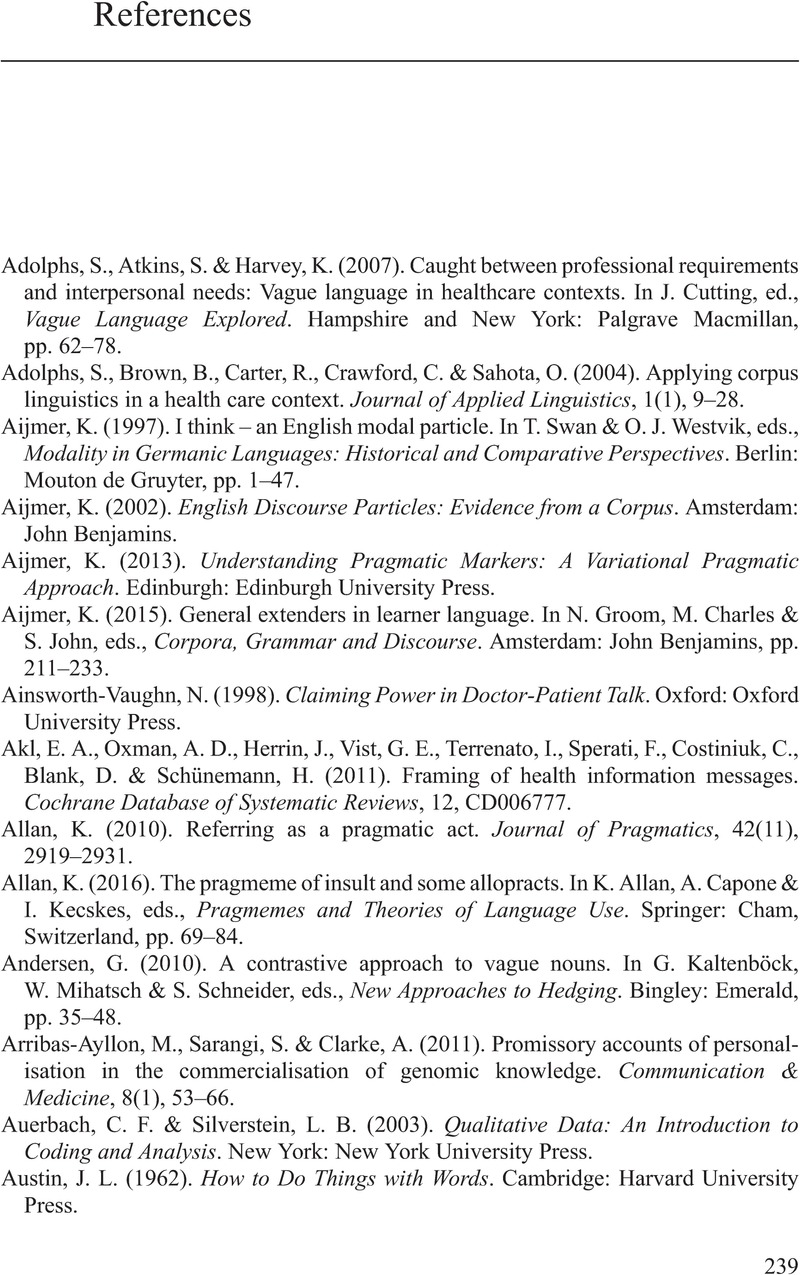Book contents
- Elasticity in Healthcare Communication
- Elasticity in Healthcare Communication
- Copyright page
- Contents
- Figures
- Tables
- Acknowledgements
- 1 Introduction
- 2 Theoretical Foundations
- 3 Methodology
- 4 Elastic Language Used in Chinese
- 5 Elastic Language Used in English
- 6 Comparison between Chinese and English Regarding Elastic Language Use
- 7 Perceptions of and Attitudes Towards the Use of Elastic Language in Chinese
- 8 Perceptions of and Attitudes towards the Use of Elastic Language in English
- 9 Comparison between Chinese and English Regarding Participants’ Feedback
- 10 General Discussion
- 11 Conclusions and Implications
- Book part
- References
- Author Index
- Subject Index
- References
References
Published online by Cambridge University Press: 04 August 2022
- Elasticity in Healthcare Communication
- Elasticity in Healthcare Communication
- Copyright page
- Contents
- Figures
- Tables
- Acknowledgements
- 1 Introduction
- 2 Theoretical Foundations
- 3 Methodology
- 4 Elastic Language Used in Chinese
- 5 Elastic Language Used in English
- 6 Comparison between Chinese and English Regarding Elastic Language Use
- 7 Perceptions of and Attitudes Towards the Use of Elastic Language in Chinese
- 8 Perceptions of and Attitudes towards the Use of Elastic Language in English
- 9 Comparison between Chinese and English Regarding Participants’ Feedback
- 10 General Discussion
- 11 Conclusions and Implications
- Book part
- References
- Author Index
- Subject Index
- References
Summary

- Type
- Chapter
- Information
- Elasticity in Healthcare CommunicationA Cross-Cultural Perspective, pp. 239 - 255Publisher: Cambridge University PressPrint publication year: 2022

